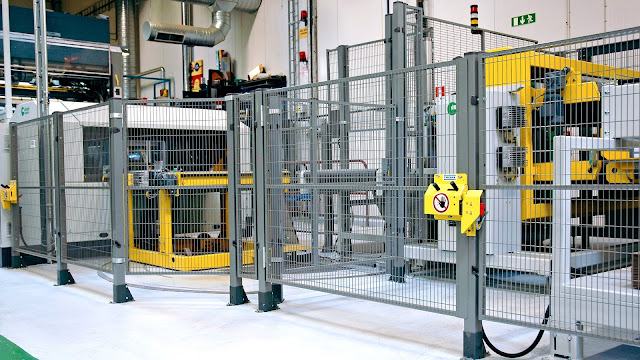Machinery Masters: The Role of Machine Guarding in Workplace Safety
Workplace safety is of utmost importance in any industry. In industrial settings, machinery plays a crucial role in production and efficiency. However, without proper precautions, machines can pose significant risks to workers.
This is where machine guarding comes into play.
Machine guarding is a critical component of workplace safety, ensuring the protection of workers and reducing the likelihood of accidents and injuries.
What is Machine Guarding?
Machine protection barriers refers to physical barriers or safety devices installed on machines to prevent access to hazardous areas. These barriers can include fences, gates, shields, or interlocks. The primary purpose of machine guarding is to create a barrier between workers and the moving parts of a machine or the hazardous energy sources it uses.
Machine guarding is essential because it helps eliminate or reduce the risk of accidents during machine operation. It provides a layer of protection and acts as a deterrent to prevent workers from inadvertently coming into contact with dangerous machine parts, such as rotating blades, gears, pulleys, or electrical components.
The Importance of Machine Guarding
Implementing proper machine guarding measures in the workplace is crucial for several reasons:
- Prevention of Injuries: Machine guarding acts as a physical barrier that prevents workers from accessing hazardous areas and coming into contact with moving parts. This significantly reduces the risk of injuries, such as amputations, fractures, lacerations, or burns.
- Compliance with Regulations: Many countries have regulations and standards that require employers to implement machine guarding. By complying with these regulations, employers protect their workers and avoid potential legal consequences and penalties.
- Enhanced Productivity: Workers who feel safe and protected can focus on their tasks without worrying about potential hazards. This leads to increased productivity and efficiency in the workplace.
- Cost Savings: Accidents and injuries can result in significant financial losses for businesses. Employers can prevent costly accidents, medical expenses, lawsuits, and worker compensation claims by implementing machine guarding.
- Improved Employee Morale: Providing a safe working environment demonstrates an employer's commitment to the well-being of their employees. This boosts employee morale and satisfaction, leading to higher retention rates and a positive work culture.
Types of Machine Guarding
There are various types of machine guarding that can be employed based on the specific needs of the machinery and the potential hazards involved:
- Fixed Guards: These are permanent barriers attached to the machine or surrounding area, providing a physical barrier between workers and the machine's moving parts.
- Interlocked Guards: Interlocked guards are designed to shut off or disengage the machine's power when the guard is opened or removed. This ensures that the machine cannot operate without the guard.
- Adjustable Guards: These guards can be easily adjusted to accommodate different sizes of materials or tools while still providing adequate protection.
- Self-Adjusting Guards: Self-adjusting guards automatically move or adjust based on the size or position of the material being processed. This ensures continuous protection without hindering the workflow.
- Two-Hand Controls: Two-hand controls require operators to use both hands to activate the machine, keeping their hands away from the hazardous areas.
- Presence-Sensing Devices: These devices use sensors to detect the presence of a worker near a hazardous area. If a worker comes too close, the machine automatically shuts off or enters a safe mode.
- Barrier Guards: Barrier guards are physical barriers preventing workers from entering hazardous areas. These can include fences, gates, or enclosures.
Implementing Machine Guarding
Implementing effective machine guarding requires careful planning and consideration. Here are some critical steps to ensure proper machine guarding in the workplace:
- Hazard Assessment: Conduct a thorough hazard assessment to identify potential risks and hazards for each machine. This includes evaluating moving parts, energy sources, pinch points, and other possible dangers.
- Machine Selection: When purchasing new machinery, consider the availability of built-in safety features and compatibility with machine guarding devices.
- Guard Selection: Choose the appropriate guard type based on the identified hazards and the specific needs of the machinery.
- Installation: Ensure that guards are correctly installed by following manufacturer guidelines and industry standards. Guards should be securely attached to the machine and inspected for defects or damage.
- Training and Education: Train workers on the importance of machine guarding, proper use of guards, and the potential hazards associated with machines. Regularly reinforce safety protocols through training programs.
- Maintenance and Inspections: Regularly inspect and maintain machine guards to ensure their effectiveness. Replace damaged or worn-out guards promptly.
- Continual Improvement: Regularly review and update machine guarding policies and procedures based on emerging technologies and best practices.




Comments
Post a Comment